For many the biggest obstacle when they want to go camping really is this: what should I bring with me in my backpack? With a jungle filled with gear, this is no surprise. You want to bring the essentials with you and be comfortable, but without it being too big, heavy and expensive. This is why I’ve made this guide for you, in order for you to know what you need in order to get a great camping trip!
PS: If you’re looking for ideas to local camping trips in Oslomarka you can read my post about this here.
What you need in order to have a good camping experience:
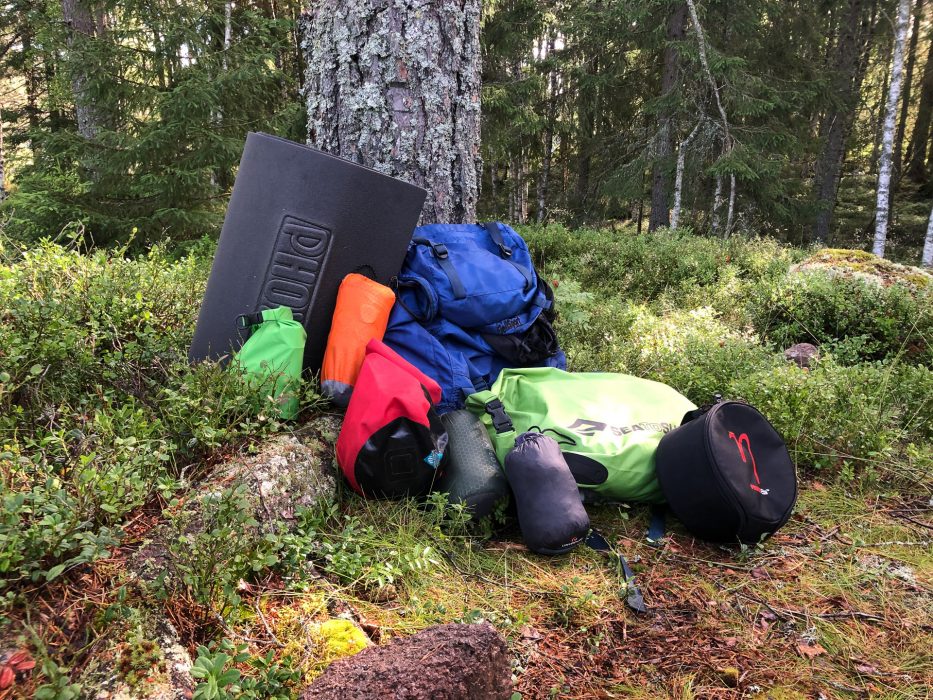
1. A good backpack
A good backpack is a must! Your backpack should be adjustable in the back, with straps that can be regulated and tightened, also over your chest and hips. This is both for regulating how the backpack will sit on your back, and for which parts of your body which will carry the main weight of the backpack (either your shoulders or hips). A backpack with mesh on your back is an extra plus, as these will allow for more “breathing”, and will make you less sweaty.
The size of your backpack depends on several factors. For instance, how much things you need to carry with you. Remember that items such as your sleeping bag, tent and mat can take up a lot of space, and that you’ll also need space for food and clothing. Some prefers to travel as light as possible, while others wants more gear for comfort. I myself have a backpack that takes 75L, while Thomas on the other hand has one with the capacity of 130(!)L.
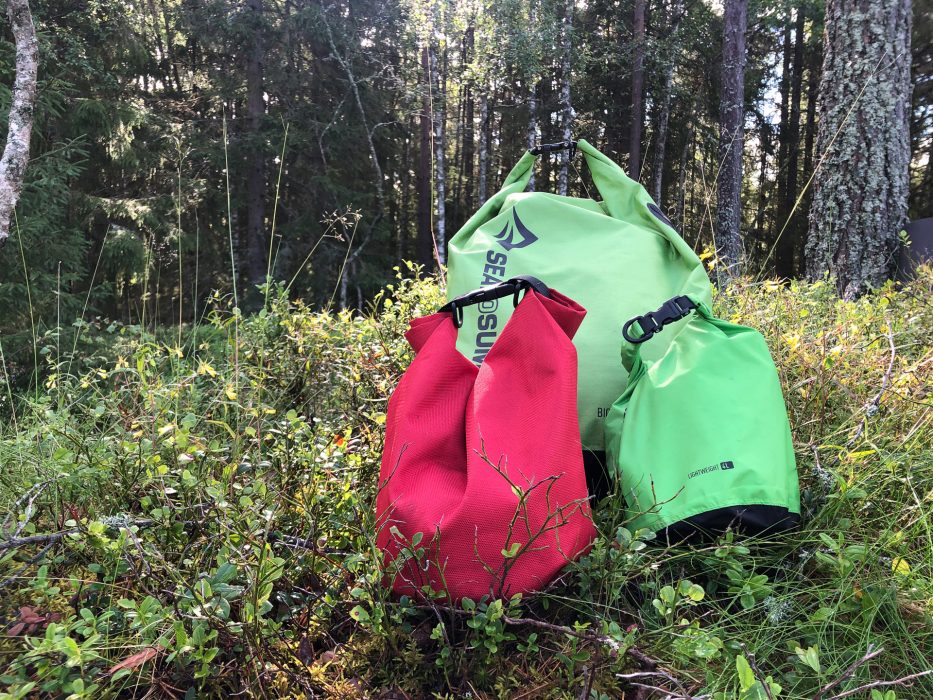
2. Tent
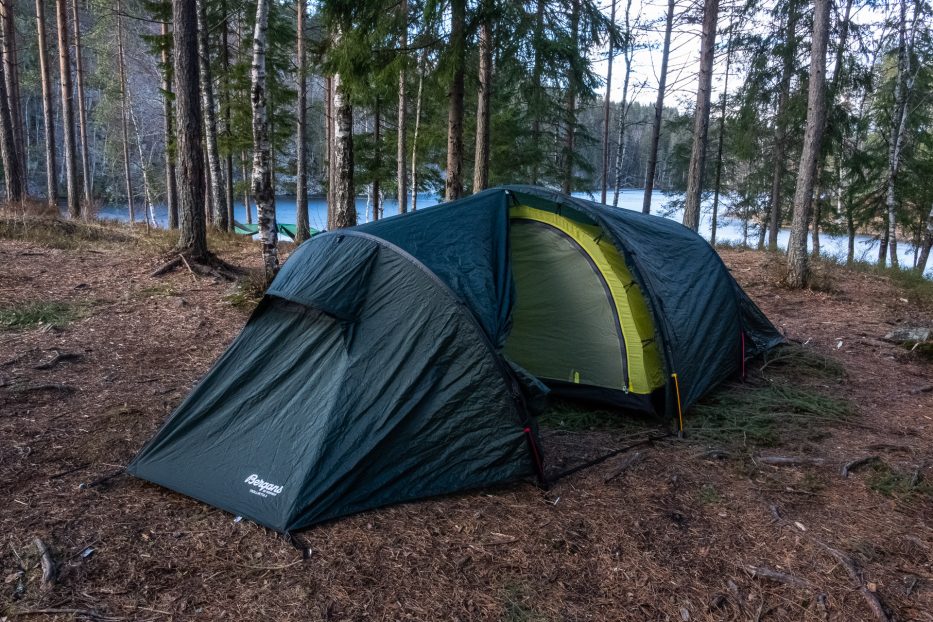
When you’re picking your tent you need to find the right balance between comfort in your tent and comfort while carrying the tent in your backpack. For longer trips, or trips that goes over several days, a smaller tent with less weight is recommended. If you’re planning a shorter trip a tent which at least allows you to sit up straight inside with no issues is worth having.
3. Sleeping mat
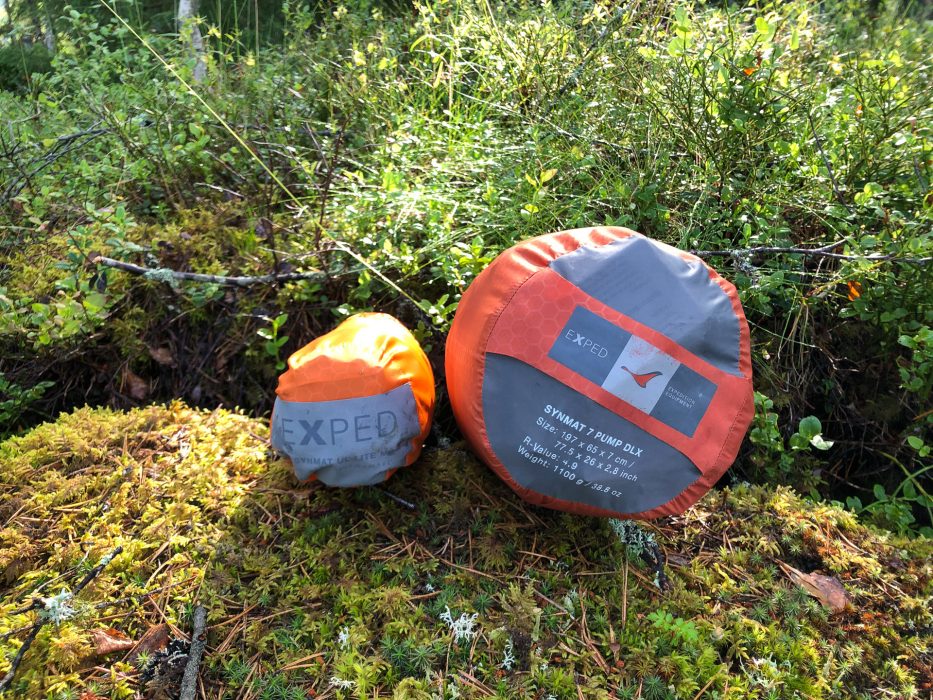
Don’t underestimate the value of a good sleeping mat! During the summer of 2018, the warmest summer in Norway ever recorded, I slept in a tent with a lame, cheap sleeping mat, and I woke up freezing. An inflatable mat is recommended, especially one with down padding. This is a thing well worth investing some money in, both because it’s something you can have for years, and because freezing during the night is one of the most lame things on a camping trip.
If you (like me) are prone to freezing at night, bring an extra foam mat (easily fastened on the outside of your backpack, and adds next to no extra weight) to put underneath.
4. Sleeping bag
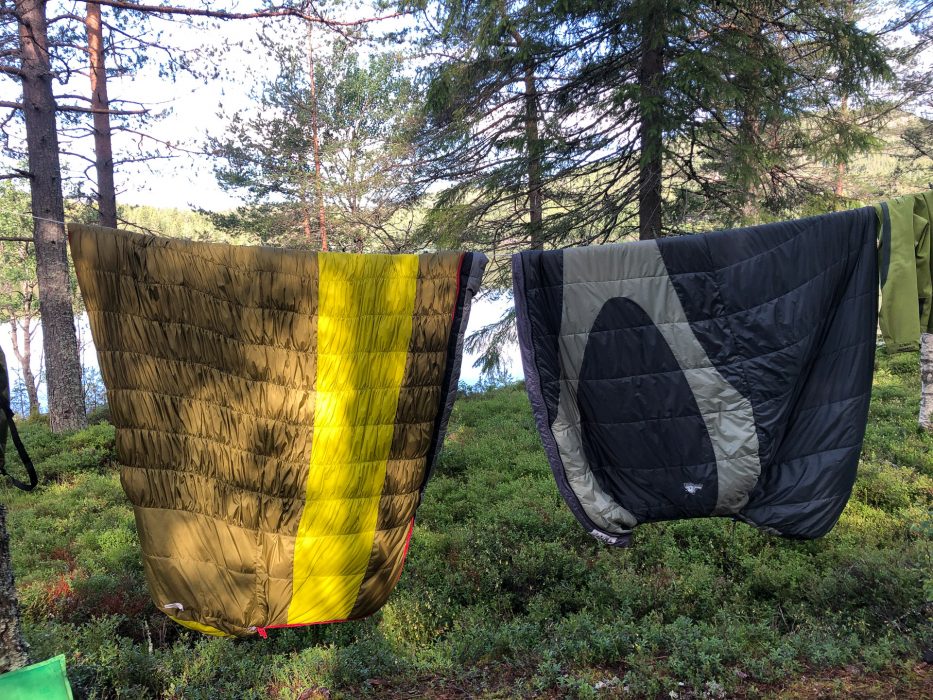
Make sure you check what the comfort temperature is for your sleeping bag! As mentioned before, I am easily cold during the night – I was freezing when camping during Easter although my sleeping bags comfort temperature and actual temperature was matching up.
The warmer your sleeping bag is, the bigger and heavier it will be – but having the right sleeping bag is essential in order to get a good night worth of sleep. If you have a liner (comes both in silk and cotton) to put inside your sleeping bag you will add a few degrees more as well.
5. Layer up with clothes. Start with wool closest to your body!
Wool clothes and socks are the best! It’s also nice to bring a layer in fleece, and a layer that’s wind proof. Remember that while both fleece and wool warms you up, the wind will go straight through. Even on a warm summer day the wind can be pretty cold, and freezing easily ruins your camping mood.
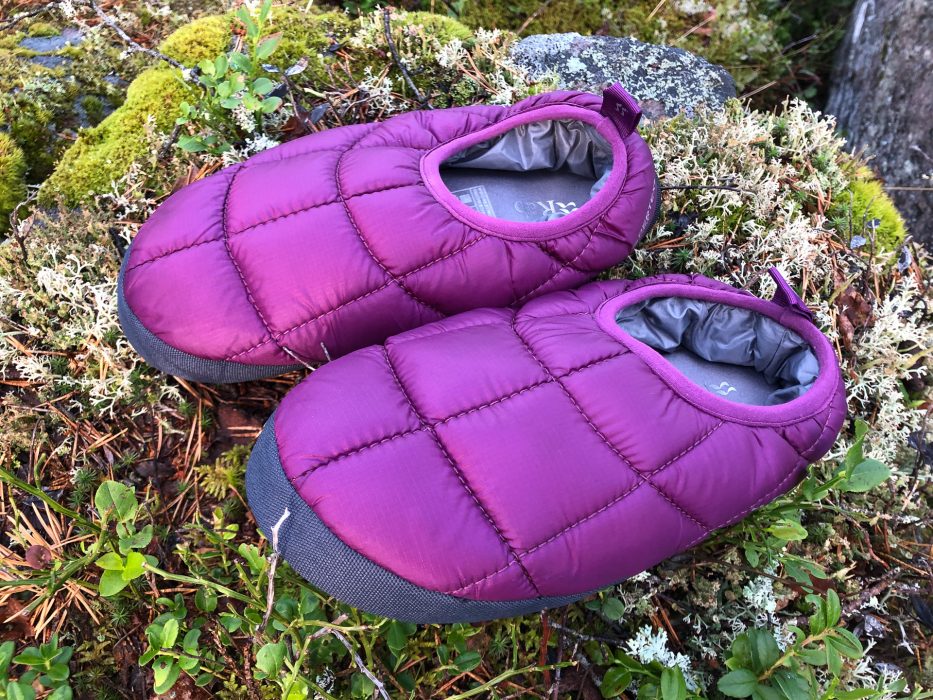
6. Good hiking boots
The most important part of your shoes is that they have to be comfortable to walk in (and for everything holy; bring plasters with you!) Make sure you walk in your shoes before setting out on a long hike, even if this means just walking to the shops and back again in them. Remember to try on your shoes with wool socks in before bying them!
Hiking boots comes in all sorts, and the biggest difference between them usually is how water proof they are, and how stiff they are over your ankles. If you’re planning on hiking outside of trails, while wearing a heavy backpack, good support and grip is a major win.
7. Hammock
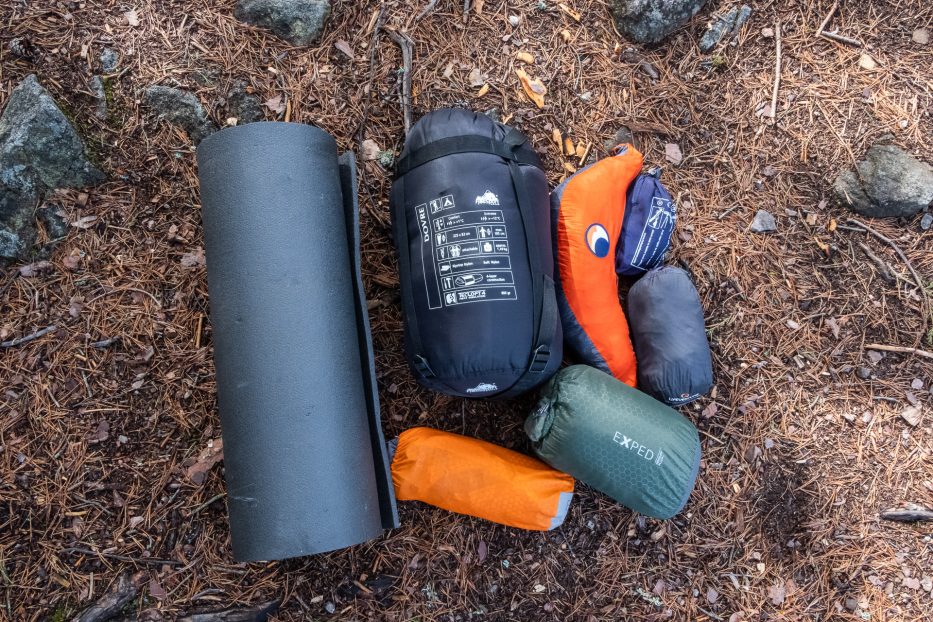
Hammocks are both fun, great to hang out in during daytime while reading a book, nice to share with someone you like or a great alternative if you want to sleep outside in it. A tarp is also a good addition in case of rain. If you sleep in your hammock during summer, a mosquito net is also highly recommended!
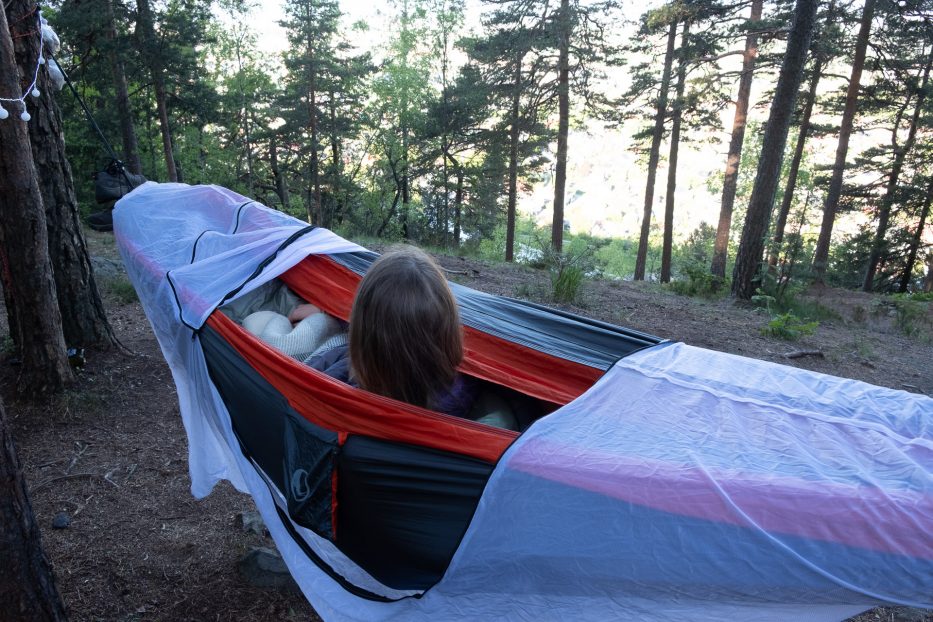
8. Camping stove (and extra gas)
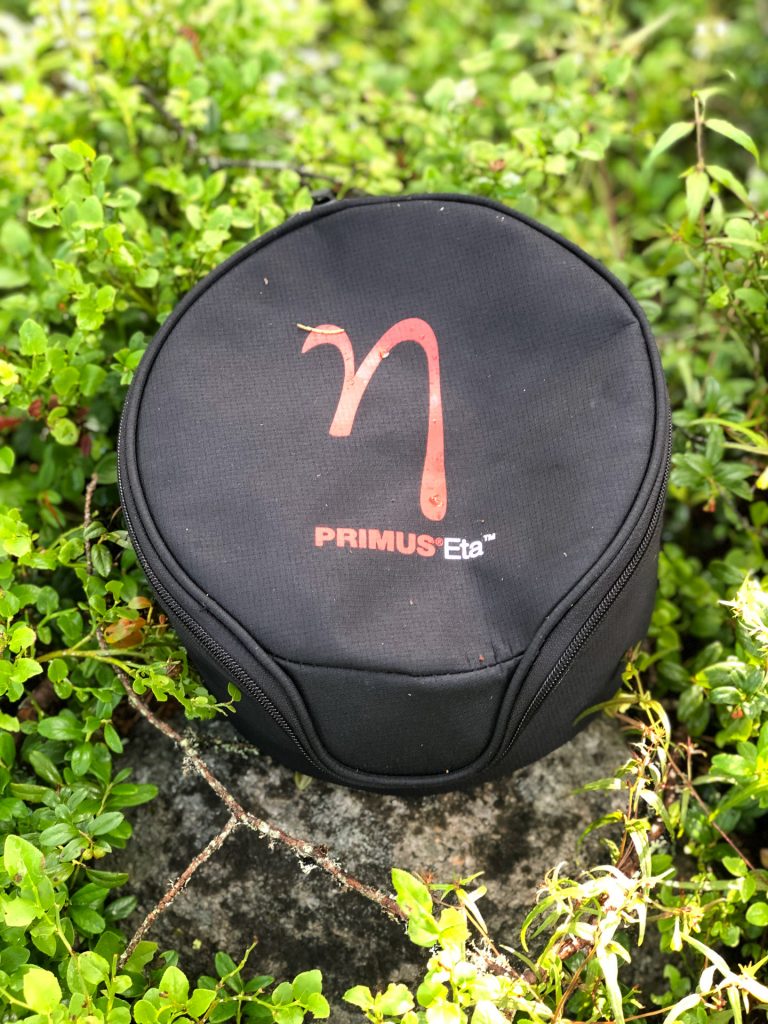
A camping stove with a shielded burner allows you to use it even in heavy wind. A gas burner is usually preferable compared to one with petrol or denatured alcohol, as the gas is both more effective and lightweight. Remember to bring matches or a lighter!
(If you’re going camping when it’s below -10 degrees however, you should use one with petrol, as gas won’t be as effective in the cold).
9. A drinking bottle
A hardshell drinking bottle with measuring on the outside and a big opening is very practical. This means you can use it as a hot water bottle in your sleeping bag, you can measure up the water for your mashed potatoes or whatever else you want to cook, and it’s easy to clean with a normal dishbrush.
If you’re sleeping somewhere you’re not sure if you can drink the water (even after it’s boiled) it can be a good idea to invest in some rinsing tablets or a bottle with it’s own rinsing system to avoid getting sick.
10. Food
Remember that it’s forbidden to light up a fire except at sertified fire places between the 15th of April and 15th of September. If you’re not at a place like this, bring food you can easily prepare at a camping stove, or something which does not require heating.
Grilling hotdogs is a classic, but also hotdogs on a thermos, pancakes made on the camping stove or a delicious curry are great and easy to make while in the forest.
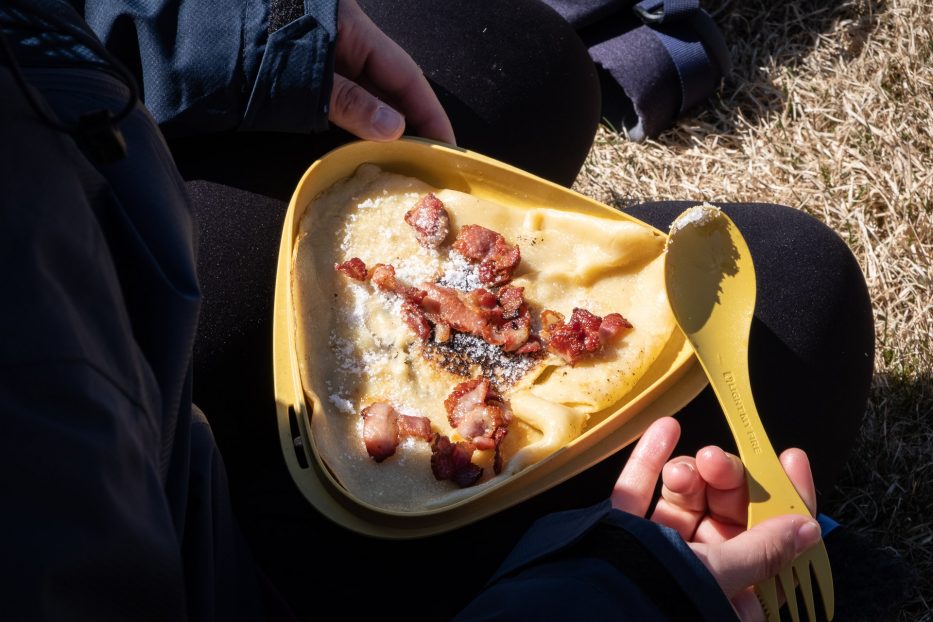
11. Powdered food/drink items
Coffee, hot chocolate, tea or maybe a cup of soup? When the sun sets it can get quickly cold, and having something hot in your cup to heat up on can be nice.
12. Toilet paper (and a bag to collect your paper in)
With “everyone” going out camping this year it can quickly get pretty disgusting out there, with toilet paper everywhere! Make sure you bring your paper with you if you’ve just peed. Throw it in the garbage when you can, or put it on the fire (if you’re allowed to make one).
13. A small shovel
Veldig praktisk å ha med, så kan du grave ned “bevisene” dersom du må en tur på do.
A very practical item to bring with you. Also allows you to bury “the evidence” if you have to do number two.
14. A few empty plastic bags
Flott for å samle søppel i. Vi pleier å legge pant i en pose for seg selv om vi har med dette. En ekstra pose til skittentøy kan også være godt å ha.
Great for collecting your garbage in! We usually collect the recyclables in it’s own bag if we bring this. An extra bag for your dirty clothes can also be smart.
15. A head torch
Med en hodelykt har du begge hendene fri, noe som er en stor fordel! Husk ekstra batterier!
With a head torch you’ll still have both your hands free, which is a great advantage when camping. Remember to bring extra batteries!
16. Seat pads
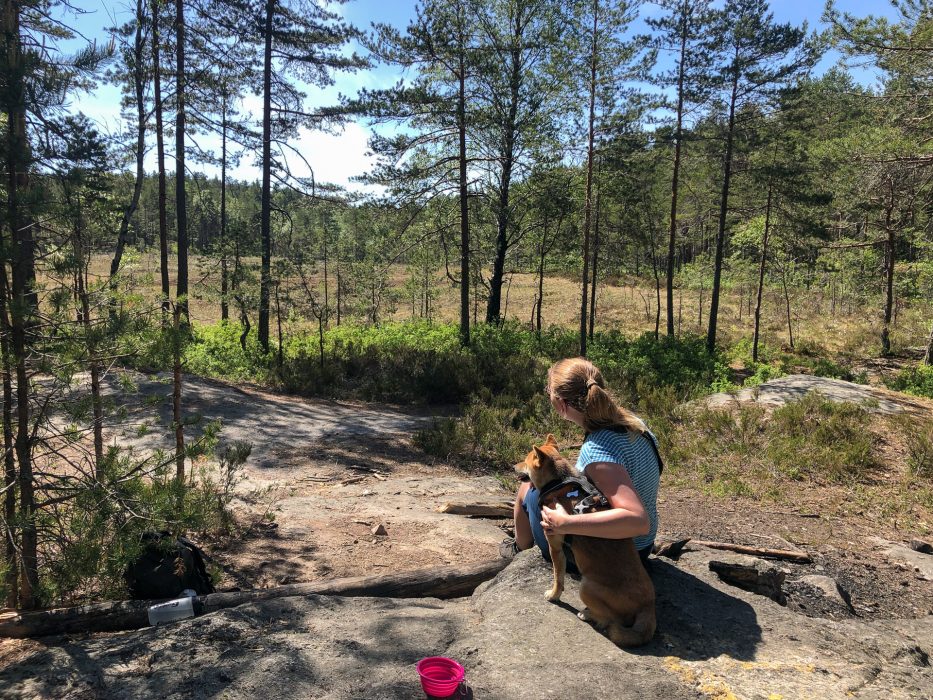
Preferably one which can be used no matter what the ground you want to sit on looks like. A seat pad is great next to the fire or just on the ground, and you can sit down without worrying if your clothes or the seating pad gets wet or destroyed. The foam mat I suggested earlier on is a great alternative for this as well.
17. A knife
Blant annet til matlaging og spikking, men også til å åpne eventuelt vanskelige forpakninger.
Perfect for making food or whittle, but also great if you need to open up a difficult container.
18. Cups, pots and pans
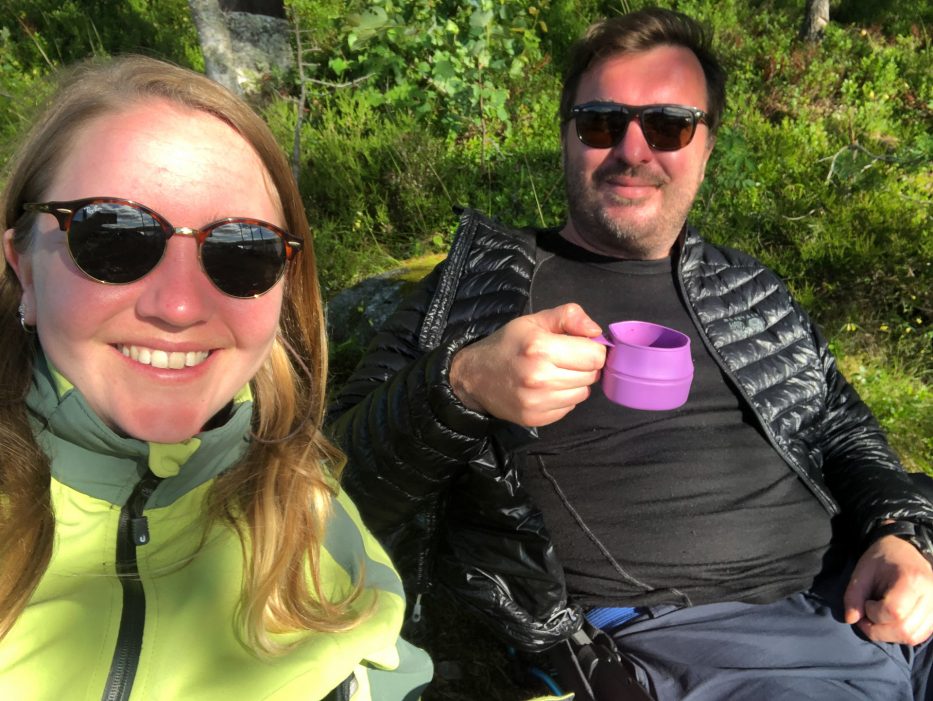
Hva du bør ha med avhenger av hva du skal spise og drikke på turen. Bestikk er også kjedelig å glemme!
What you’ll need really depends on what you’re planning on eating while camping. Cutlery is also really annoying to forget!
19. Wet wipes
fungerer fint både til personlig hygiene og oppvask. Evt. en svamp og litt oppvasksåpe, tar liten plass og er effektivt
Wet wipes are great both for your personal hygiene and for the dishes. A small sponge and some dishwashing soap is also effective.
20. Things depending on weather and season:
For eksempel solkrem, myggspray, antibac, fiskestang og tarp/presenning (fint både i tilfelle regn, eller for å få litt le på en vindfull dag).
This can for instance be sunscreen, mosquito repellant, hand sanitizer, fishing rod and a tarp (great both in case of rain, or for shelter on a windy day).
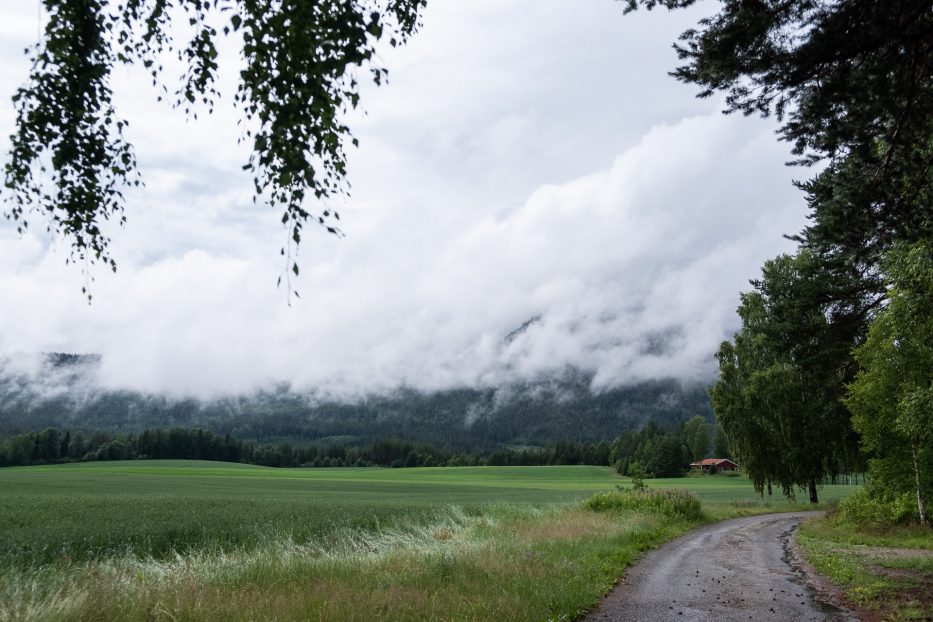

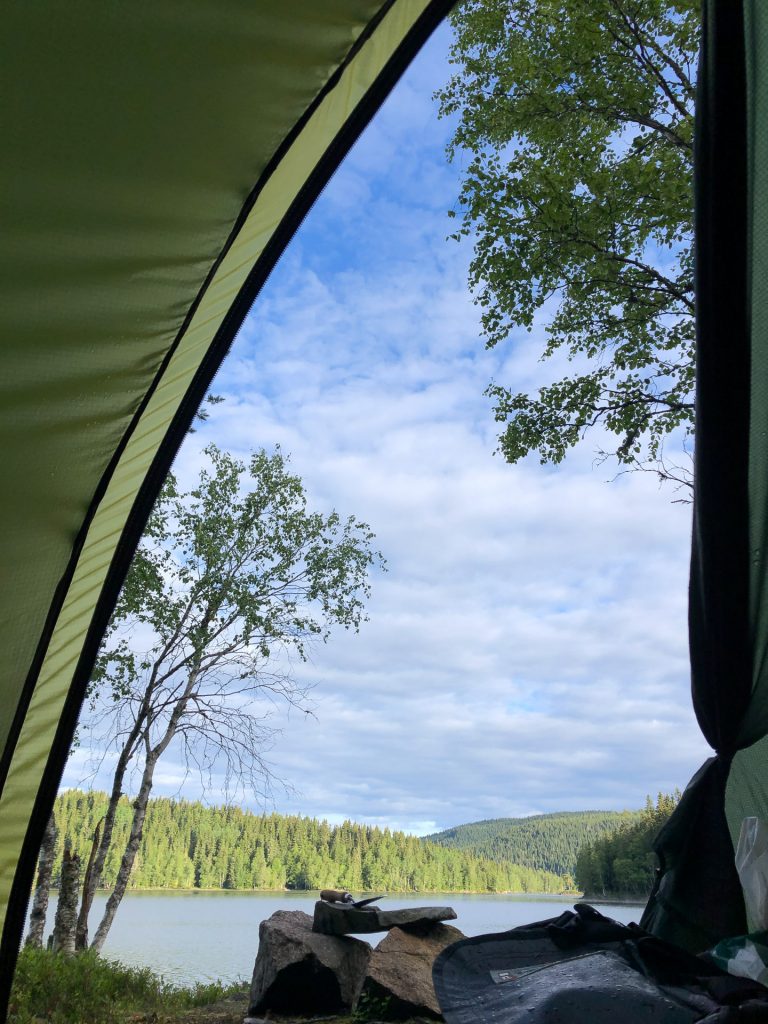
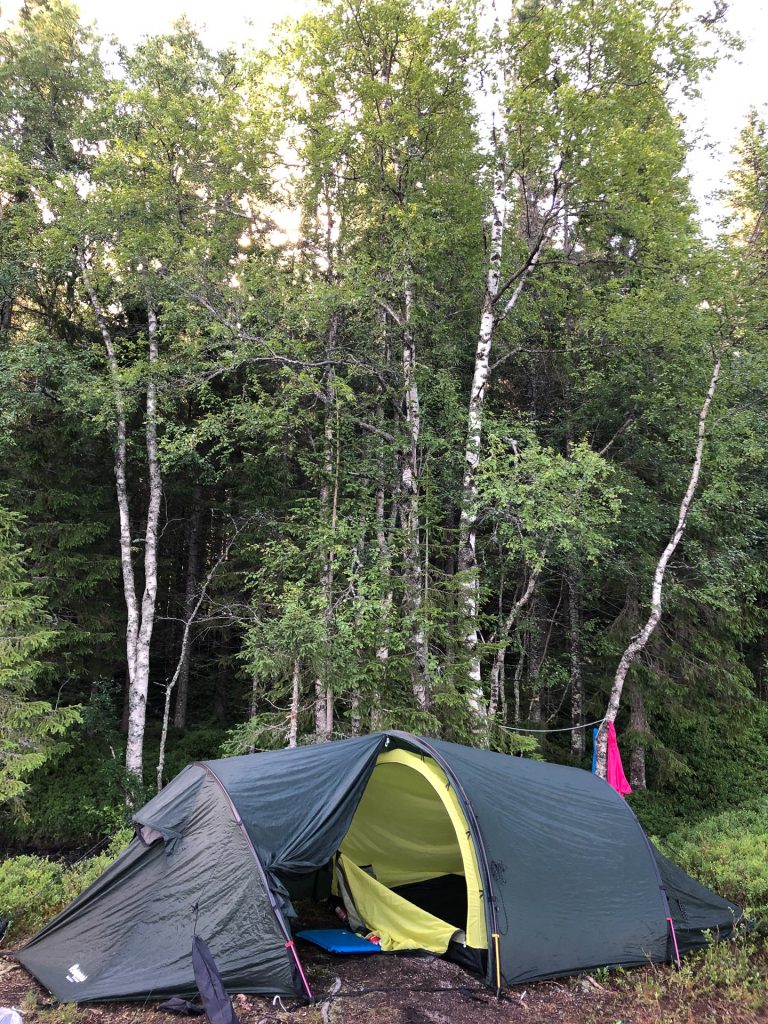
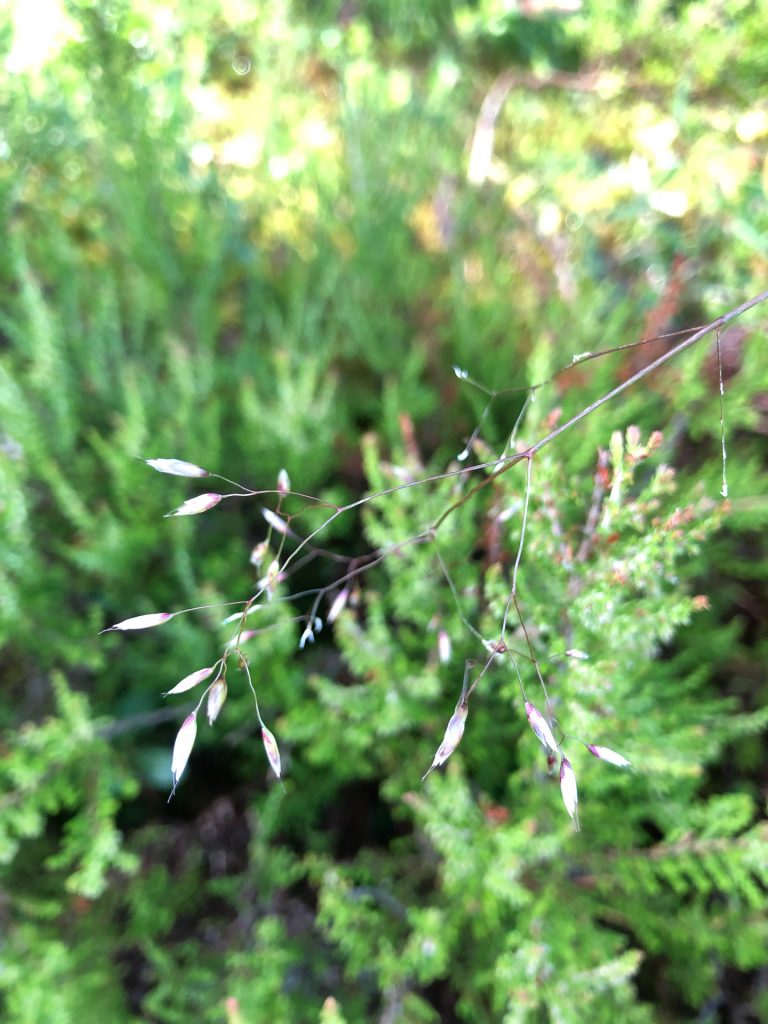
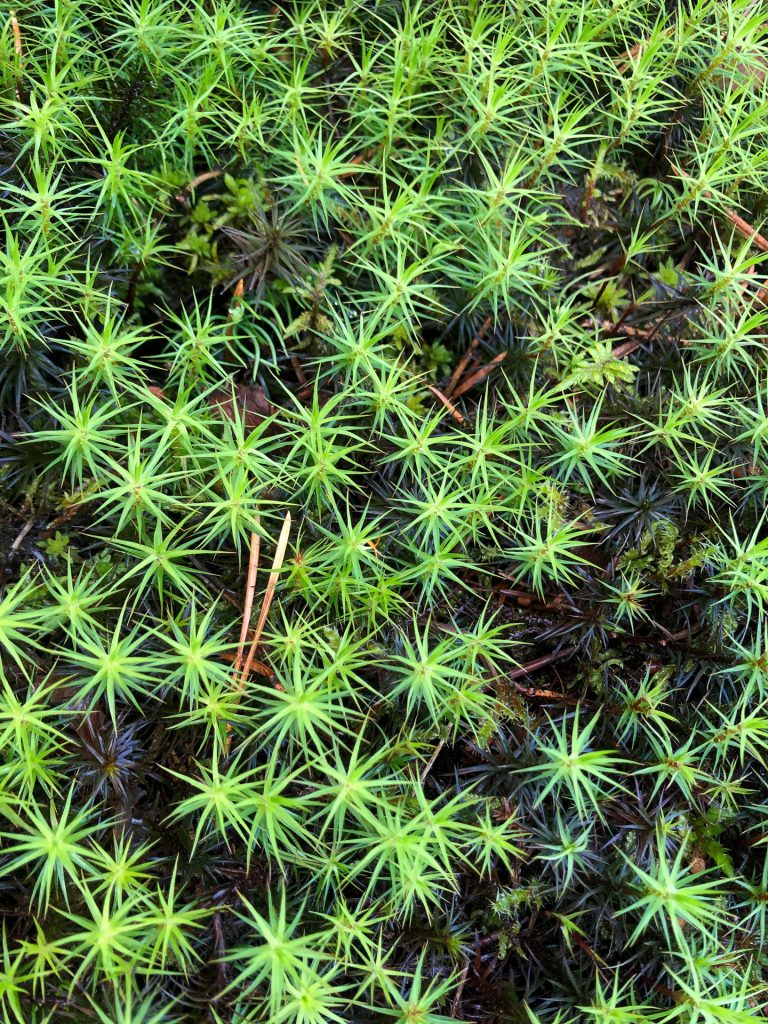

Comment
Thanks for sharing content related to camping. I am looking for such an article for a long time. Keep writing.